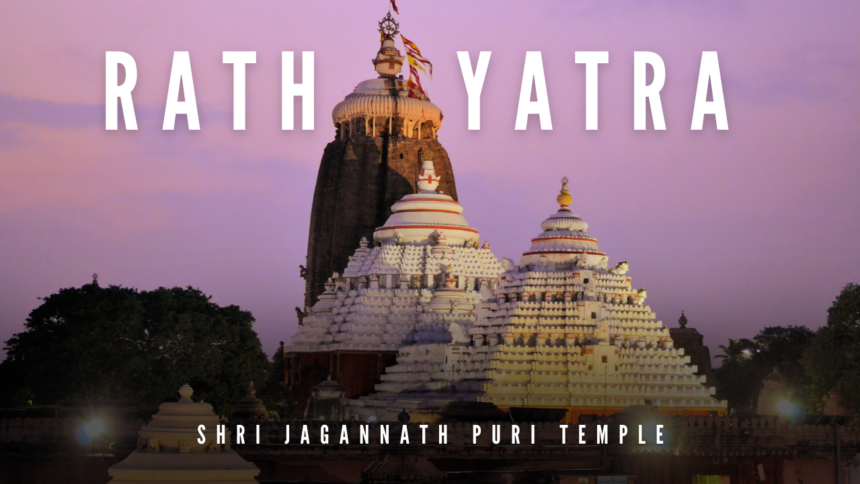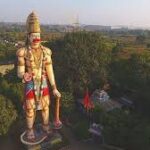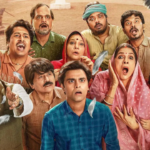On June 27, 2025, the sacred city of Puri, Odisha, came alive with the vibrant colors, rhythmic chants, and fervent devotion of the Rath Yatra, one of India’s most significant Hindu festivals. This annual chariot festival, dedicated to Lord Jagannath, Lord Balabhadra, and Goddess Subhadra, drew millions of devotees, pilgrims, and tourists from across India and the world to witness the divine procession. The Rath Yatra, also known as the Chariot Festival, is not only a religious event but also a profound cultural spectacle that embodies unity, faith, and tradition.
The festival, rooted in centuries-old traditions, commemorates the journey of Lord Jagannath, an incarnation of Lord Vishnu, along with his siblings, from the Jagannath Temple to the Gundicha Temple, believed to be their aunt’s abode. The deities are carried in massive, intricately decorated wooden chariots, pulled by thousands of devotees through the bustling streets of Puri. This year, the festival was marked by an unprecedented turnout, with the Odisha government and temple authorities ensuring meticulous arrangements to manage the massive crowds and maintain safety.
The day began with the sacred rituals inside the 12th-century Jagannath Temple. The deities were adorned with exquisite jewelry, vibrant silk garments, and floral decorations during the “Nava Yauvana Vesha” (youthful attire). Priests performed the “Mangal Aarti” and other rituals before the ceremonial “Pahandi” procession, where the deities were brought out of the temple with great reverence. The sight of Lord Jagannath, with his large, expressive eyes, being carried to his chariot, Nandighosa, was a moment of spiritual ecstasy for the devotees, who chanted “Jai Jagannath” and “Haribol” in unison.
The three chariots, each distinct in design, were the centerpiece of the festival. Lord Jagannath’s chariot, Nandighosa, stood 45 feet tall with 16 wheels, adorned with red and yellow canopies. Lord Balabhadra’s Taladhwaja, with 14 wheels and green-red hues, and Goddess Subhadra’s Darpadalan, with 12 wheels and black-red colors, followed in a majestic procession. The construction of these chariots, a months-long endeavor, showcased the craftsmanship of local artisans who used traditional techniques passed down through generations.
As the chariots rolled down the Grand Road (Bada Danda), the atmosphere was electric. Devotees, young and old, pulled the thick ropes attached to the chariots, believing that this act of devotion would grant them divine blessings and liberation (moksha). The rhythmic beats of traditional instruments like mridang, kartal, and jhanj filled the air, blending with the chants of mantras and devotional songs. The streets of Puri were a sea of humanity, with people from diverse backgrounds united in their devotion to Lord Jagannath.
The Odisha government ensured robust security and logistical arrangements to accommodate the massive influx of pilgrims. Over 200 platoons of police, along with bomb detection squads, were deployed, and CCTV cameras monitored key areas. Special trains and buses were arranged to facilitate travel, while medical camps and water stations were set up along the route to ensure the well-being of devotees. The state’s efforts to promote eco-friendly practices were evident, with initiatives to minimize plastic use and maintain cleanliness during the festival.
Beyond Puri, the Rath Yatra was celebrated with fervor in other parts of India and abroad. In cities like Ahmedabad, Kolkata, and even international locations like New York and London, ISKCON-organized Rath Yatras brought the essence of Puri’s festivities to global audiences. These events highlighted the universal appeal of Lord Jagannath, whose message of inclusivity resonates across cultures.
The festival also holds deep spiritual significance. The journey of the deities symbolizes the soul’s quest for divine connection, and the act of pulling the chariots represents surrender to the divine will. For many, the Rath Yatra is a time for introspection, prayer, and renewal of faith. The Gundicha Temple, where the deities reside for seven days, becomes a focal point of devotion, with rituals like “Adapa Mandapa Darshan” drawing large crowds.
As the sun set on June 27, 2025, the Rath Yatra concluded with devotees returning home, their hearts filled with divine bliss. The festival, a harmonious blend of spirituality, culture, and community, reaffirmed the timeless appeal of Lord Jagannath’s universal love. In an era of rapid change, the Rath Yatra remains a beacon of tradition, uniting millions in a shared celebration of faith.





